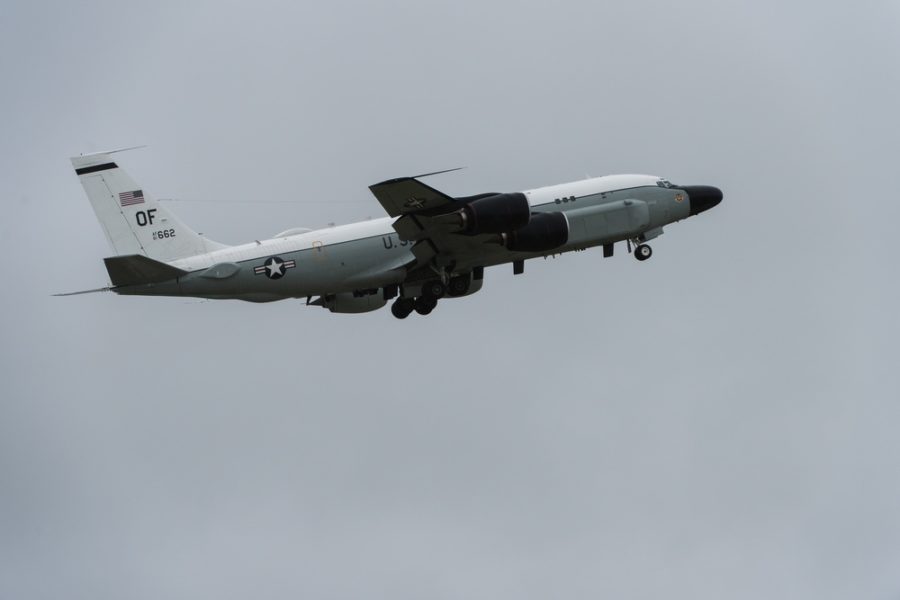The RC-135S gathers measurement and signature intelligence (MASINT) on missile-associated signatures and tracks during boost and reentry.
Cobra Ball superseded Rivet Ball and Rivet Amber in 1969 and collects both
optical and electronic data on ballistic missile activity.  Its specialized equipment includes the long-range Medium Wave Infrared Array (MIRA) EO/IR sensor suite, all-weather tracking radar, and an advanced communications suite.
Its specialized equipment includes the long-range Medium Wave Infrared Array (MIRA) EO/IR sensor suite, all-weather tracking radar, and an advanced communications suite.
Reconnaissance data is used to assess missile threats, evaluate missile performance, characterize adversary missiles, and analyze weapons testing and technology. Data also supports treaty verification and theater ballistic missile nonproliferation.
It can deploy anywhere in the world in 24 hours and provide on-scene EO reconnaissance. Continuous baseline upgrades keep the fleet viable through 2040, and aircraft are currently undergoing integration and testing of Baseline 6 mods (similar to Rivet Joint Baseline 12).
FY20 launched Baseline 7 development, and flexible funding permits
rapid, variant-specific mods in response to emerging/evolving threats.
Baseline 7 upgrades will include Rivet Joint COMINT suite integration,
digital electromagnetic signature direction finding, digital search, and
SATCOM-aided target discrimination.
Contractors: Boeing (airframe); L3Harris; Textron Systems.
First Flight: N/A.
Delivered: October 1969-November 2000 (redelivery as RC-135S).
IOC: March 1972 (Cobra Ball II).
Production: Four converted.
Inventory: Three.
Operator: ACC.
Aircraft Location: Offutt AFB, Neb.
Active Variant: •RC-135S Cobra Ball. Modified C-135 equipped for MASINT/treaty verification.
Dimensions: Span 131 ft, length 135 ft, height 42 ft.
Weight: Max T-O 297,000 lb.
Power Plant: Four CFM International F108-CF-201 turbofans, each 21,600 lb thrust.
Performance: Speed 517+ mph, range 3,900 miles (farther with air refueling).
Ceiling: 45,000 ft.
Accommodation: Two pilots, navigator, three EWOs, two airborne systems engineers, two airborne mission specialists.
